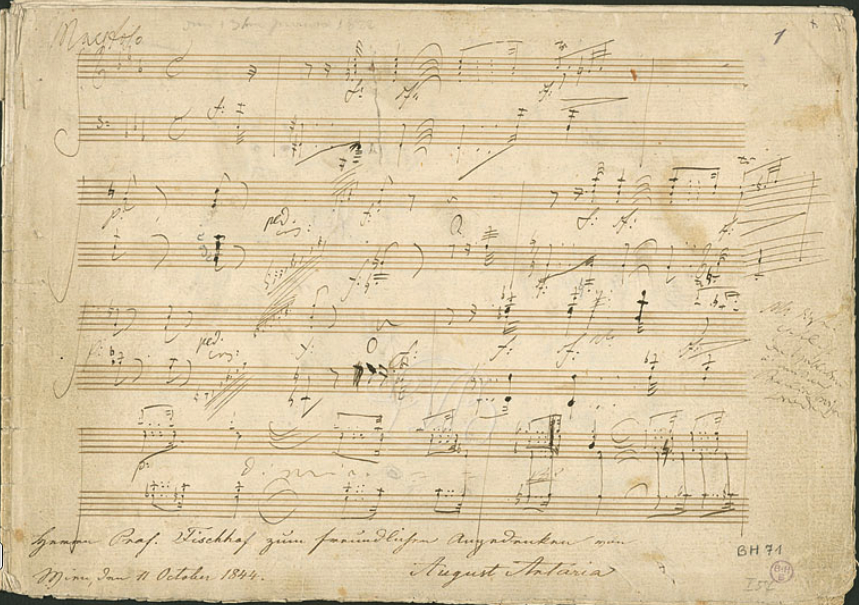Not quite sure what they are researching but if it is Mozart's notational practices, the manuscripts and first editions of the piano sonatas are now fairly complete at IMSLP and worth a detailed look through. One does need to be aware that some of the first editions were done after Mozart's death and edited with very heavy hands, which creates major problems for modern editions. So in some cases, later editions by Andre which appear to be much more authentic are now considered to be the better sources precisely because they conform more to the original notation.
For Beethoven see
viewtopic.php?t=729 concerning Beethoven's comment in the first movement of op. 90. And there are other comments mostly clarifying the notation in other sonatas (see op. 101 last movement for a famous one.)
It is also interesting to compare Beethoven's copyist's version of op. 111 (which was sent to the publisher) with the composers manuscript. (See examples below.) In doing so we see how the copyist conformed with Beethoven's notation, even when it was not in accordance with the norms of the time. There was no attempt to correct Beethoven's notation in preparation for publication, presumably because that is the notation the composer desired. The publisher then followed Beethoven's notation as well as they could in engraved form and made a few changes to conform with prevailing norms. Some publishers honored Beethoven's notation better than others, but there is no evidence that Beethoven was relying on the copyist or publisher to "clean up" his notation, or that he felt it needed to be. Breitkopf and Haertel first editions were one of the most faithful and preserved more of Beethoven's special notational style than perhaps others. I also think that they are some of the most beautiful from that time:
https://ks15.imslp.org/files/imglnks/us ... Op.81a.pdf
My general impression is that JS Bach, Mozart, Beethoven and Chopin, took musical notation very, very seriously and those around them did the same; but all were also human and made mistakes. Here is are the first pages of op. 111:

- op 111 Beethoven.png (1.03 MiB) Viewed 8629 times

- Op 111 Copyist.png (1.11 MiB) Viewed 8629 times
M1 Mac mini (OS 12.4), Dorico 6, Finale 25.5, GPO 4, Affinity Publisher 2, SmartScore 64 Pro, JW Plug-ins, TG Tools, Keyboard maestro